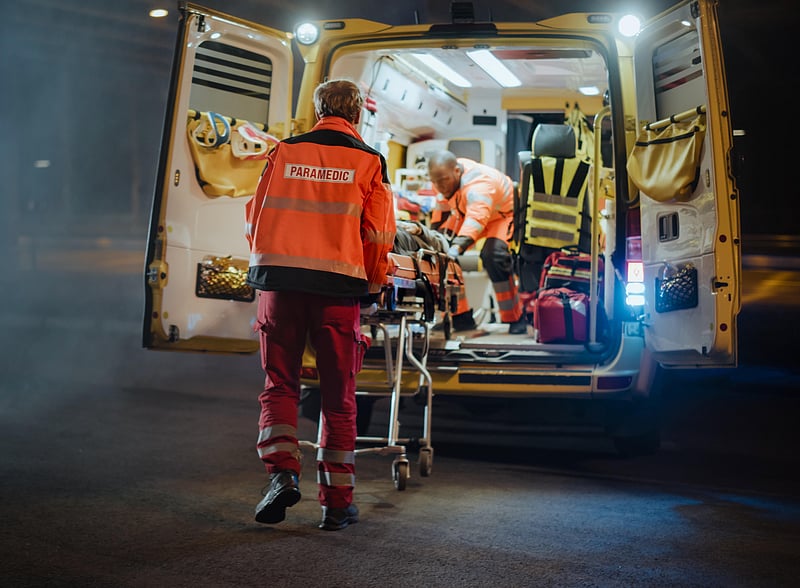Get Healthy!

- Posted December 20, 2022
Pandemic Brought Surge in Teen Drug Overdose Deaths
Deaths of teens from drug overdoses soared starting in late 2019, and though they appear to be on the decline, they remain much higher than in 2019, U.S. health officials report.
Most of these deaths are due to illegally made fentanyl mixed with other drugs, said study author Lauren Tanz, an epidemiologist at the U.S. Centers for Disease Control and Prevention.
"Adolescent overdose deaths increased substantially between 2019 and 2021; however, these deaths are preventable, and overdoses do not have to end in death," Tanz said. "We all play a role as parents, family members, friends and communities to prevent overdoses and save lives."
Using data from the CDC's State Unintentional Drug Overdose Reporting System, the researchers found that overdose deaths among 10- to 19-year-olds began to rise in late 2019. Among 14- to 18-year-olds, overdose deaths jumped 94% from 2019 to 2020 as the COVID-19 pandemic raged on.
Between the second half of 2019 and the second half of 2021, monthly overdose deaths among teens jumped a median 109%, Tanz said. Those involving illicitly manufactured fentanyl rose 182%. (Median means half of months had higher rates, half lower.)
About 9 in 10 overdose deaths involved at least one opioid, more than 8 in 10 involved illicitly manufactured fentanyl, and nearly one-quarter involved counterfeit pills, according to the report.
The availability of fentanyl has driven the surge in overdose deaths, according to Dr. Nora Volkow, director of the U.S. National Institute on Drug Abuse.
"Over the past few years, there has been a marked expansion in the drug supply of illicit fentanyl, a cheap, very potent synthetic opioid drug," she said. "While people may seek out fentanyl intentionally in some cases, many people are not aware whether the drug they are using contains fentanyl, which can put them at high risk of overdosing."
The surge of fentanyl in the drug supply is of enormous concern, Volkow said, especially the contamination of counterfeit pills made to resemble prescription drugs such as ADHD (attention-deficit/hyperactivity disorder) medications, sleep aids or painkillers.
"It is absolutely crucial to educate young people that pills purchased via social media, given to someone by a friend or obtained from an unknown source may contain deadly fentanyl," Volkow said.
Mental illness also contributed to the surge, Tanz said.
More than 40% of teens who died from a drug overdose had a history of a mental illness, such as depression or suicidal or self-harm behavior, or had been treated for a mental health condition, the researchers found.
"Our results show that overdose deaths among adolescents continued to rise from January to June 2020, coinciding with the pandemic's onset, and was possibly related to declining mental health," Tanz said. Social isolation and lack of access to school-based mental health services may also have played a role.
Linda Richter, vice president for prevention research and analysis at the Partnership to End Addiction, in New York City, said, "This report should be a wake-up call to all families, communities, educators, health professionals, policymakers and young people themselves that what was an opioid epidemic is now a fentanyl crisis causing an unacceptable number of completely preventable deaths among teenagers." She was not involved in the study but reviewed the findings.
"These deaths are rising as illegal drug use is generally declining among youth, which indicates that it's not that more teens are using dangerous drugs, but rather that those who are using the drugs are increasingly likely to die from them," Richter said.
Volkow struck a similar chord.
"Drug use among adolescents is becoming more dangerous, but not necessarily more common," she said.
Researcher Tanz said steps to prevent overdose deaths are urgently needed. These include:
- Promoting prevention.
- Monitoring risk behaviors, such as poor school performance and teens associating with others who use drugs; promoting positive social and life skills; and improving well-being.
- Educating teens about the dangers of illicitly manufactured fentanyl and counterfeit pills.
- Educating family and friends on ways to recognize warning signs of drug use.
- Learning how to respond to an overdose.
- Training friends and family to use naloxone, a medicine used to rapidly reverse an opioid overdose, and expanding access to it.
- Ensuring access to effective treatment for mental health problems and substance abuse.
The study was published Dec. 16 in the CDC's Morbidity and Mortality Weekly Report.
More information
The U.S. Department of Health and Human Services has more about preventing drug overdoses.
SOURCES: Lauren Tanz, ScD, MSPH, epidemiologist, U.S. Centers for Disease Control and Prevention, Atlanta; Nora Volkow, MD, director, U.S. National Institute on Drug Abuse; Linda Richter, PhD, vice president, prevention research and analysis, Partnership to End Addiction, New York City; Morbidity and Mortality Weekly Report, Dec. 16, 2022






